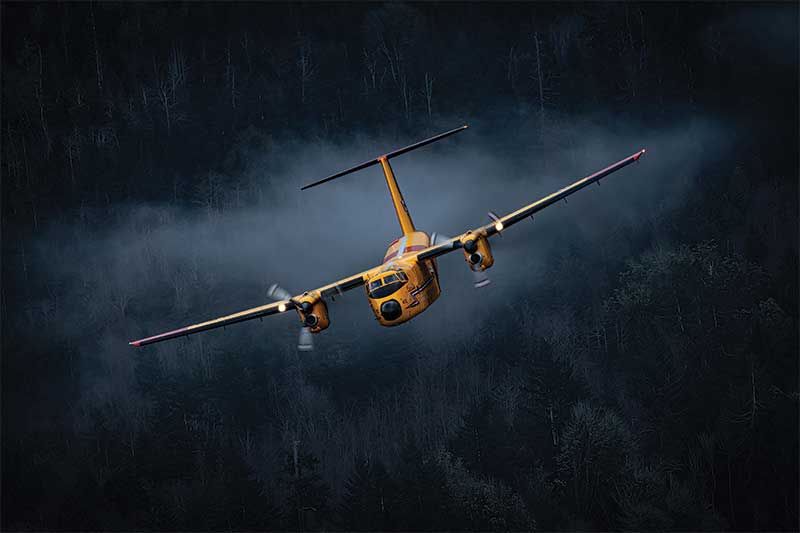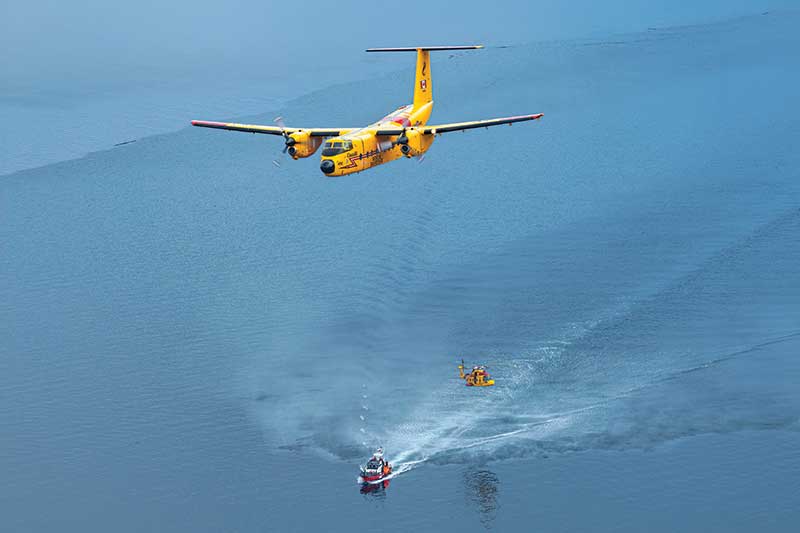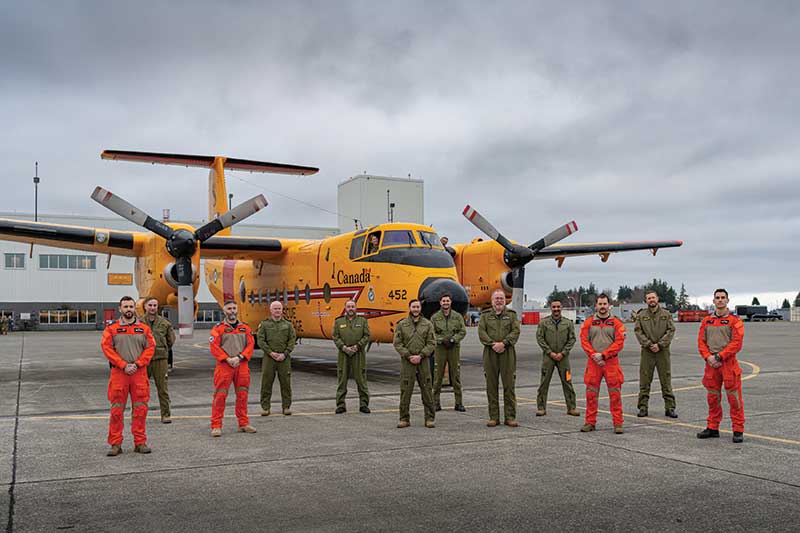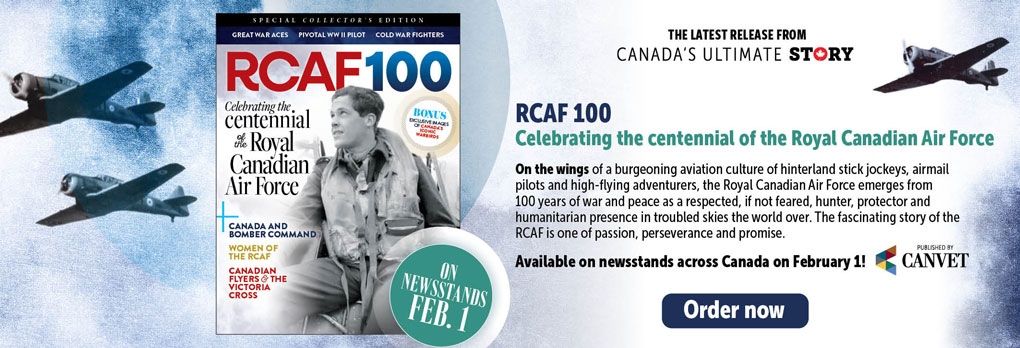
After 55 years, the thrum of a Buffalo taking to the sky will be heard no more. The last of the Royal Canadian Air Force de Havilland CC-115 Buffalo fixed-wing, search-and-rescue (SAR) aircraft took their final flights—one on a training mission and the other to document the last performance—one year ago, on Jan. 15.
Weather conditions precluded a parachute jump, but crew members practised dropping rescue equipment and supplies to boats on open water and performed “valley shoots,” flying low through mountain passes so SAR technicians could get a close look at conditions on the ground.
“It was a great way to continue working full-out right to the very end,” said pilot Major Ryan Port in AirMed&Rescue magazine.
Entering RCAF service in 1967, the turboprop aircraft was initially used for tactical transportation, moving troops and equipment. In 1974, nine Canadian Armed Forces peacekeepers were killed in a Buffalo shot down by Syrian missiles in the Golan Heights.
The “Buff,” as it was affectionately called, could fly at low altitudes day or night for parachute drops, handle all weather conditions and take off and land in about the length of a soccer field. That meant the aircraft was also well suited for search and rescue, and CC-115s were eventually stationed across the country. But as age culled the herd, the remaining planes were concentrated on the West Coast, where they worked particularly well in mountainous terrain and over wild waters.

In the 2000s, 442 Transport and Rescue Squadron at Canadian Forces Base Comox on Vancouver Island became home to the final six Buffalo. But maintenance costs soared, and parts became hard to find. It was time for retirement.
“[The Buffalo has] been there
since before I was born,
and it just kept on going.”—Major Ryan Port
On the final working flight, as his crew practised dropping sea rescue kits, Captain Fahim Awan recalled for Skies Magazine a life-saving drop in November 2021. A 14-metre boat had burned to the waterline and its crew was in a dinghy, fighting high winds and wild seas, in danger of being hurled onto rocks and swept away.
“It was a speck in the water [surrounded by] whitecaps,” said Awan. SAR techs dropped a 180-metre line to establish communications. The Buffalo crew could hear the desperation in the castaway’s voices. A fishing boat had come to their aid, but couldn’t safely get close enough to help.

“I…got us down and dirty, low over the water,” said Awan. SAR techs dropped another 180 metres of line, connecting the vessels so the fishing boat could pull the dinghy to safety.
“That was probably the highlight of my career as a SAR pilot,” said Awan, though piloting a Buff’s final flight has also got to be high on that list.
The Air Force Heritage Park near Summerside, P.E.I., the National Air Force Museum of Canada in Trenton, Ont., the Comox Air Force Museum in B.C. and the Air Force Heritage Museum and Air Park in Winnipeg have each received one of the last six aircraft. One of the final two is earmarked for the Canada Aviation and Space Museum in Ottawa and the other will be used as a CAF training aid.
BY THE NUMBERS
55
Years of service in the RCAF for the de Havilland CC-115 Buffalo
2,240
Range of the CC-115 in kilometres
420
Maximum speed in kilometres per hour of the Buffalo
19,560
Maximum gross weight in kilograms of the aircraft
Advertisement












